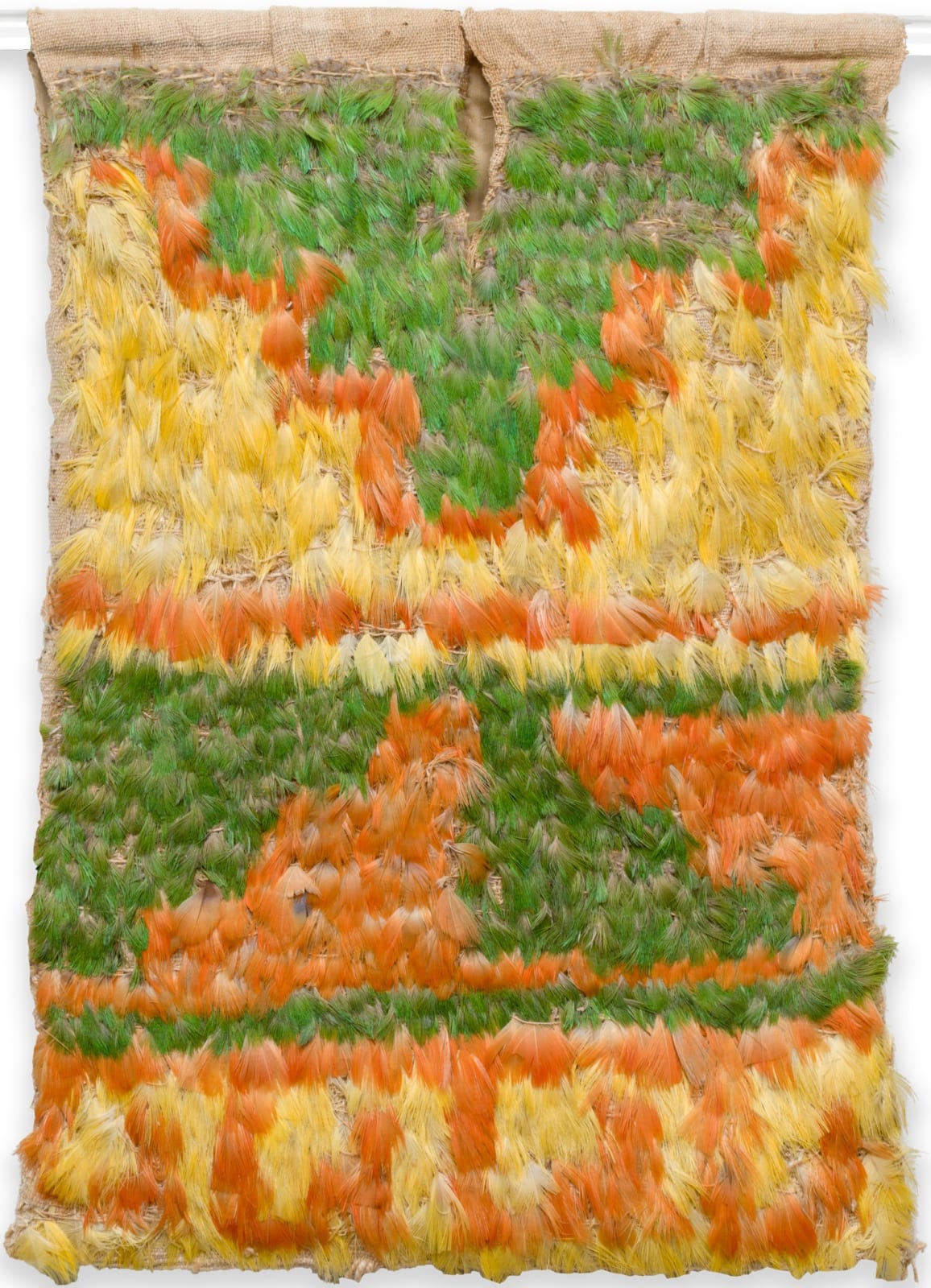



Nazca Culture 100 BC-800 AD
18'1" x 13'3" in
Further images
A beautiful example of pre-Columbian Andean feather mini tunic preserved in an almost impeccable condition.
Of universal appeal and unique beauty, feathers have for thousands of years been used by people in all parts of the Andes to adorn themselves and to animate their environment. Among traditional societies, feathers and objects embellished with feathers also have great cultural value and are imbued with spiritual energy and supernatural force.
In a feather textile, three components need to be meticulously examined: the woven structure of the foundation fabric; the composition of any dyes used in this material; and the type of feathers and the manner in which they are applied. Although the backings of some featherwork consists of wood, leather and totora reed, the main material used was cloth. The cotton was grown in the valleys along the Peruvian Pacific coast. The wool came from the camelid family consisting of – in order of fineness of quality – the vicuña, the guanaco, the alpaca and the llama.
Similar examples could be found in the Anni and Josef Albers’s collection, as both have been avid collectors of pre-Columbian arts throughout their life.
Exhibitions
Paul Kasmin Gallery, New York. 1995Join our mailing list
* denotes required fields
We will process the personal data you have supplied in accordance with our privacy policy (available on request). You can unsubscribe or change your preferences at any time by clicking the link in our emails.



